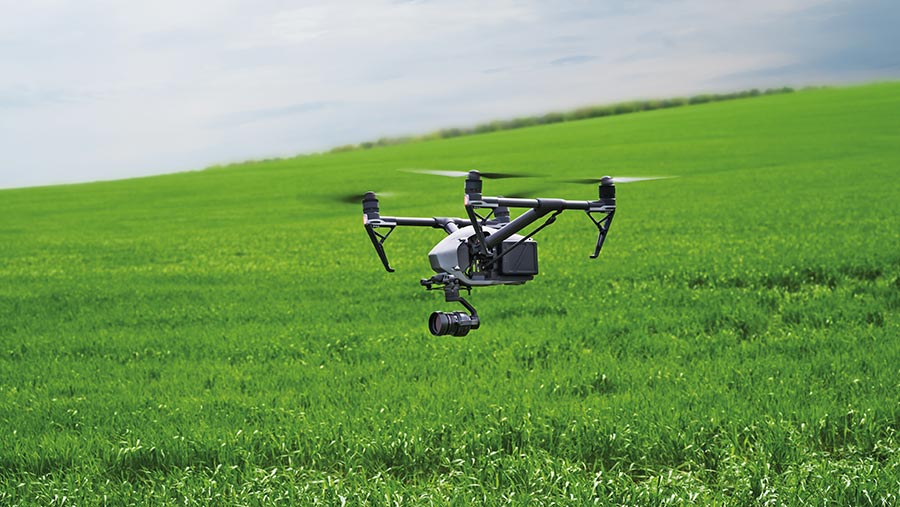R&D tax relief – what qualifies on farm and how not to miss out
 © izikmd/Adobe Stock
© izikmd/Adobe Stock Farm businesses claimed £70m in research and development tax rebates in 2020-21 but many others are missing out.
The scheme is open to companies only and there are just weeks left to claim tax relief under the R&D scheme for the 2020-21 tax year.
See also: Tax reform warning for those using farm profit averaging
Many techniques and approaches being used on farm qualify, but wider knowledge of the scheme is needed among farm businesses.
Work qualifying for this relief from corporation tax must be part of a project to make an advance in science or technology relating to a company’s trade, or one that it plans to start up based on the results of the R&D.
R&D tax relief – what qualifies?
R&D relief claims must relate to a project to research or develop a new process, product or service or improve on an existing one.
Claims must explain how a project:
- looked for an advance in science and technology
- had to overcome uncertainty
- tried to overcome this uncertainty
- could not be easily worked out by a professional in the field
Expenditure by a small- or medium-sized enterprise (SME) qualifies for an enhanced corporation tax deduction of 130% of the amount spent, but this will be cut to 86% from 1 April 2023.
This can then be traded in for a cash refund of 14.5% in certain circumstances and where the company is loss-making. This will also be cut from 1 April, to 10%.
So far, 1,275 claims have been submitted for 2020-21 by agricultural companies, but with the application window running until March 2023 there is an opportunity for others to apply.
Mathew Browne, a senior tax manager at accountant UHY Ross Brooke, says the firm believes agriculture accounts for a large proportion of companies that are entitled to apply but do not do so.
“With constantly evolving techniques and machinery to improve the performance of the agriculture sector, it is inevitable that R&D tax relief opportunities are being missed,” says Mr Browne.
Applications are made on form CT600L, which has been updated so that more information is required than was previously the case.
This is in response to HMRC’s effort to combat fraud through unregulated agents.
Proposals mooted include making it compulsory for claims to be made digitally and for certain mandatory evidence to be included, said Mr Browne, although the detail on this has yet to be announced.
Claims will need to be endorsed by a named senior officer of the business.
Companies will also need to inform HMRC that they plan to make a claim – the timeframe proposed is six months in advance from the end of the accounting period.
“Claims will need to include details of any agent who has advised the company on compiling the claim,” says Mr Browne.
However, what won’t change is the qualifying criteria – the two key conditions are for the work to be an advancement in science or technology and for it to overcome scientific or technological uncertainty.
This means that work needs to be on innovative methods for improving output or it involves trying new things.
Mr Browne says there are several examples of how this might look in agriculture:
- Trials to reduce the use of, or need for, antibiotics
- Using a systematic approach to improve soil quality, crop yield or crop disease resistance through trialling new varieties
- Overcoming technological or scientific uncertainty to optimise production
- Selective breeding trials or feeding trials to achieve an advance in genetic traits or type of feed
The majority of claims from agricultural businesses are for agri-tech, says Mr Browne .
“If a business is working on a project that develops innovative technology to provide solutions to problems in agriculture, farming, or food production and distribution such as drones, sensors, scanners, smart software, robotics, analytics, or data monitoring, it may be eligible to make an R&D tax claim,” he says.
Qualifying businesses can receive the rebate as a cash payment or as a reduction in their corporation tax bill, or a combination of both.
R&D tax credits fraud pursued
HMRC has successfully challenged several false claims for R&D tax relief.
Many of these were for projects that did not satisfy the criteria and some included overstated expenditure, says Mr Browne.
“This is a generous tax break,” he says. “£100,000 of qualifying R&D expenditure would potentially result in a tax refund to a loss-making company of £33,350.”
Past spurious claims mean HMRC now requests additional information to support the claims.
There are agents dedicated to helping businesses claim R&D tax credit who charge a percentage of the total claim as payment. However, many accountants handle claims on behalf of their clients, charging their usual hourly rate.
“The ever-changing regulation and increased administrative burden surrounding R&D claims also make it increasingly important to engage with an experienced R&D specialist when evaluating a potential claim,” says Mr Browne.
